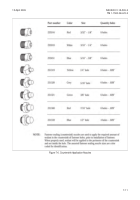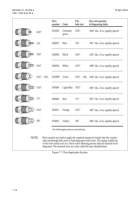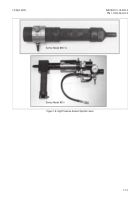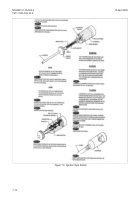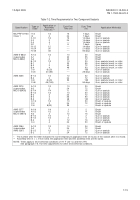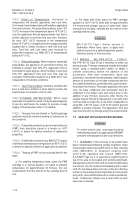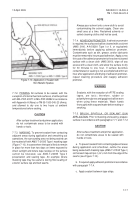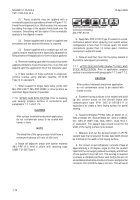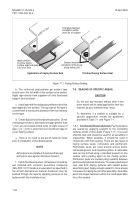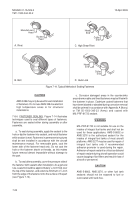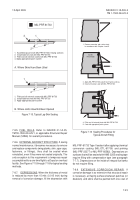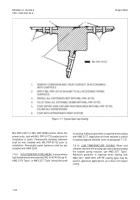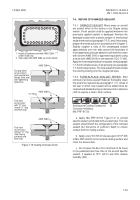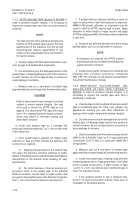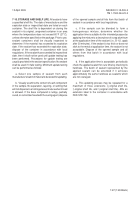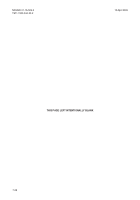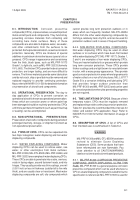TM-1-1500-344-23-2 - Page 136 of 240
7-20
NAVAIR 01-1A-509-2
TM 1-1500-344-23-2
15 April 2009
Figure 7-11. Faying Surface Sealing
Apply sealant
to entire faying
surface approximately
1/32 inch thick
Sealant must be
extruded continuously
along entire joint
Application of Faying Surface Seal
Finished Faying Surface Seal
Complete fastener
installation within
work life of sealant
b. The reinforced polyurethane gel sealant tape
should cover the full width of the surface to be sealed.
Apply tape directly from supplied roll onto floorboard
support structure/spar.
c. Install tape with the tacky polyurethane side of the
tape applied to the surface. The top side of the tape is
covered with a translucent protective film that remains
on the tape.
d. Create butt joints at floorboard spar joints. Do not
overlap tape sections, but make sure gaps greater than
1
⁄
8
inch are not created at butt joints. A slight excess of
tape (
1
⁄
8
to
1
⁄
4
inch) is preferred over insufficient tape to
cover mating surface.
e. There is no need to pre-punch fastener holes
prior to installation of floorboard panels.
NOTE
As fasteners are installed, the polyurethane gel
will help to seal against moisture intrusion.
f. Install floorboard panels. All fasteners should be
wet installed with corrosion preventive compound
(MIL-PRF-16173 Grade 4 or equivalent) as specified in
the aircraft maintenance manual. Fasteners may be
pushed through the tape by applying pressure to the
fastener with the installation tool.
7-8. SEALING OF SPECIFIC AREAS.
CAUTION
Do not use any two-part sealant after it has
been mixed and its rated application time has
expired, as poor adhesion may result.
To determine if a sealant is suitable for a
specific application, review the guidelines
provided in Table 7-1 and Figure 7-1.
7-8.1. FAYING SURFACE SEALING. Faying surfaces
are sealed by applying sealants to the contacting
surfaces of two or more parts (Figure 7-11). It is a very
effective seal and should be used for all assembly or
reassembly. When possible, it should be used in
conjunction with fillet sealing. There are two types of
faying surface seals, removable and permanent.
Removable seals are used around access doors,
removable panels, and inspection plates. A removable
seal can be formed using a standard sealant on one
surface and a parting agent on the mating surface.
Permanent seals are created using sealants between
permanently fastened structures. To create a permanent
seal, coat both mating surfaces with sealant before
assembling part. Apply enough sealant to force a bead
to squeeze out along the joint after assembly. Assemble
parts and torque fasteners within the rated application
life of the sealant.
Back to Top


